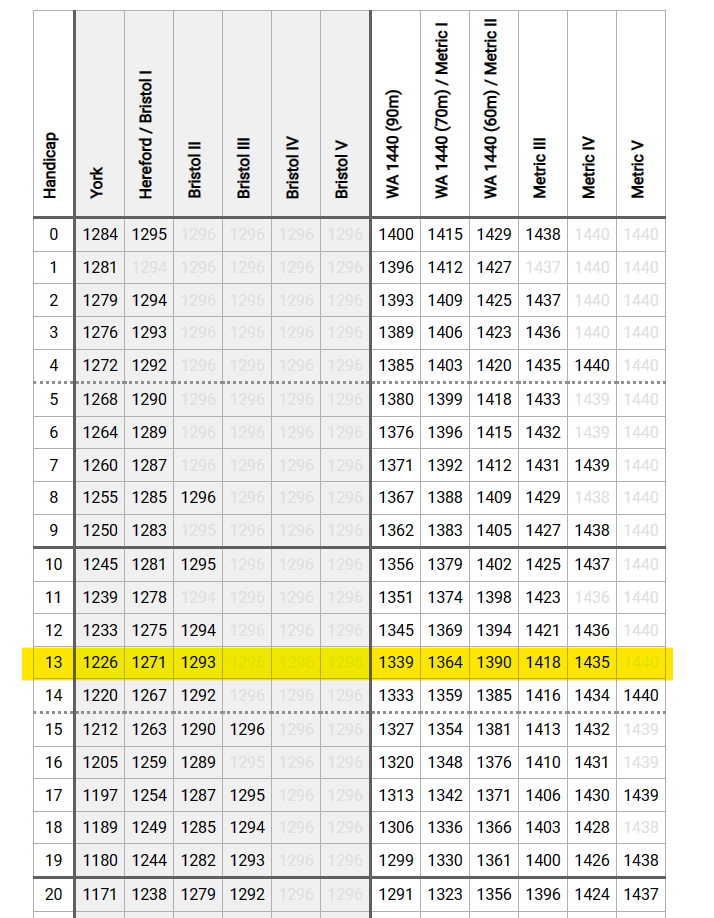The UK archery handicap system is one of the most underrated assets we have in this country. It provides a mathematically rigorous way of quantifying accuracy in archery, and then uses that to calculated expected scores on different rounds for that level of accuracy. The system was originally devise by the late David Lane, and has stood the test of time for over 4 decades now.
In 2023, the algorithm was tweaked slightly to more accurately reflect the performance of modern archery equipment, but the fundamentals remain the same. Jack at archerycalcualtor.co.uk will be writing more on the mathematics behind the new system soon, so I won’t steal his thunder by covering that here. Instead, I’ll focus on some of the practical tools you’ll find on this site for dealing with handicaps.
The first an most obvious thing related to handicaps are the handicap tables. These allow you to do two things
- For a given score, look up what the handicap of that score is (if the exact score isn’t shown, you take the next handicap above it).
- For a given handicap, look up what score might be expected for that round. For example, if your handicap is 13 (which is extremely good), you might expect to score 1226 on a York round, 1339 on a 90m 1440, or an enormous 1435 on a Metric 4.

The official handicap tables can be downloaded from ArcheryGB, but if you want a more customised version, you can create one on this site using this table generator which can also be found at the bottom of this page.
Handicaps for Analysis and Comparison
Looking across the handicap tables to find expected scores on other rounds is a bit laborious. On our Handicap Tools page, you’ll find a tool specifically designed for this task.

This can be really useful if you’re shooting a new round for the first time, or if you’re trying to set selection scores for teams and want to ensure that the same level of performance is involved in both e.g. “You qualify to join the squad if your have scored 609 on a WA 60m or 577 on a WA 70m“
Handicap Tables for Custom Rounds
The mathematics of the handicap system is not limited to our standard rounds. We can easily calculate a handicap table for a complete made-up combination of arrows, distances and face sizes. On our Handicap Tools page, you can do exactly this.
Imagine you’re practising at your club, and because of the availability of targets, you end up shooting some weird combinations. Let’s say you shoot 2 dozen arrows at 60m on an 80cm target face, and then 30 dozen at 70m on a full-size face. Let’s say you score 460 points doing this, and your normal handicap is 30. Is this a good or bad score? This tool allows you to answer exactly this, and we see that in this case 460 on that custom round is a handicap of 35, which is worse than you would have hoped. Further down the page, we can generate a full handicap table for this custom round, and we can see that with a handicap of 30, we would have expected to score 486 points on that round, which gives us an idea of how far off we are.

Group Size Calculations
As I mentioned at the start, handicaps are really just a way of calculating group sizes, and we can expose those underlying calculations in some interesting ways. Also on the Handicap Tools page, you’ll find these two calculators at the bottom, which let you calculate group size comparisons, and group sizes for a given handicap.

Custom Handicap Table Generator
This tool, also available on our dedicated handicap table generator page, allows you to generate custom handicap tables for your favourite set of rounds, with customisable precision and range. You can also download the results as a CSV for use in spreadsheets if you prefer.
Leave a Reply